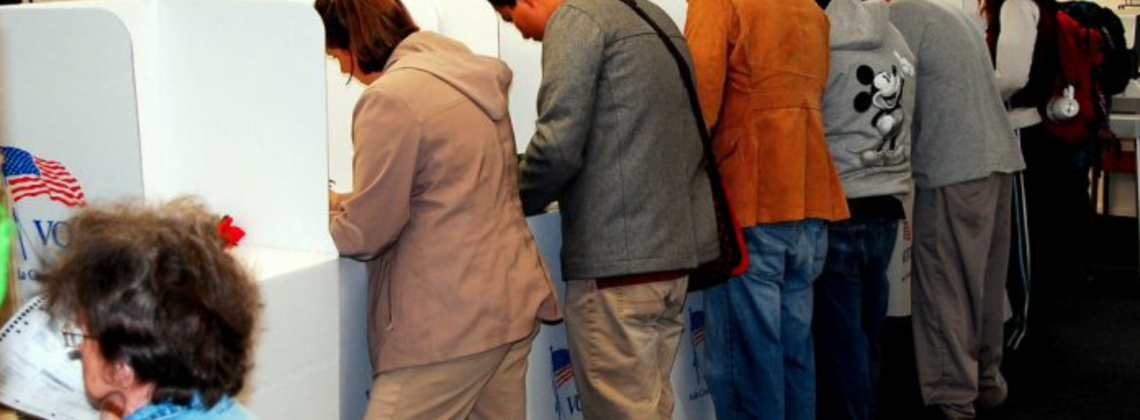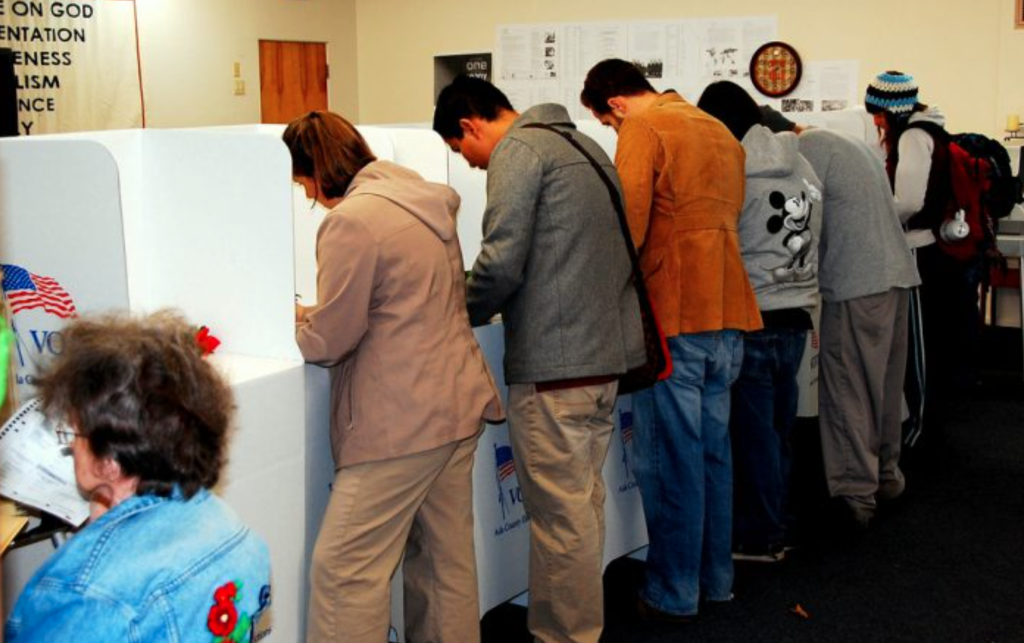

An educational class divide could return Trump to the White House
The conventional wisdom was that Donald Trump would be the easiest Republican candidate for the Democrats to beat this year. He started his campaign with extremely low favorability ratings; the number of Americans who viewed him unfavorably (sixty-three percent) outnumbered those who viewed him favorably (thirty-five percent) by nearly two to one, according to a Pew poll taken last summer. And would a candidate facing multiple criminal indictments—who has also just lost a civil defamation case that suggests that he raped a woman—really be able to win an electoral majority?
Based on my reading of state-level polls, it appears that Trump is now on track to defeat President Joe Biden in November.
Yet Democrats seem oblivious to this, and are doubling down on a campaign strategy that is almost certain to alienate the voters they need to win. Democrats fail to understand that this campaign has become a contest between college-educated voters who are comfortable with established institutions and less-educated voters who are attracted to an anti-establishment campaign. Because a majority of Americans lack a college degree, a campaign that relies mainly on the college-educated metropolitan vote cannot win.
Those battle lines were already present in 2020, but they have hardened since then, which is why Trump is now polling well in nearly every state whose population is less college-educated than the national average. Of the twenty-eight states whose population is less likely than the American population as a whole to have completed a four-year college degree, only one (New Mexico) is a likely win for Biden, while twenty-three are so strongly in the Trump camp that they are not even considered competitive.
Among states with a high percentage of college graduates, the contest is equally lopsided; Biden is expected to win all of the twelve most educated states.
The educational class divide is Trump’s path to victory this year. By turning the election into a culture war against college-educated “elites” and their established institutions, he is making inroads among groups that no Republican presidential candidate has won in decades. Multiple polls during the past three months have shown Trump winning fourteen to thirty percent of the African American vote, with strong showings especially among Black men. No Republican presidential candidate has won more than twenty percent of the Black vote for the last half century, but Trump could break this record. Polls also project him winning thirty-nine percent of the Hispanic vote. Trump appears poised to do what no Republican candidate has ever done: create a successful, moderately multi-racial, working-class coalition that is united in an anti-institutional class war against the “elites.”
This strategy has a reasonable chance of working. National polls show Trump and Biden in a dead heat, but state-level polls suggest that Trump has a narrow lead over Biden for an electoral vote majority. Newsweek magazine declared last month that if the election were held today Trump would win with 285 electoral votes.
In a race where the battle lines are already hardened along an educational divide the outcome in most states is not in doubt. Based on numerous polls, the site 270toWin has rated only six states as “toss-ups”: Pennsylvania, Nevada, Georgia, Arizona, Wisconsin, and Michigan.
Without those six states, Biden will finish the race with 226 electoral votes, and Trump will finish with 235. Since 270 electoral votes are needed to win, both candidates will need to carry at least a few of those six states.
Biden won all six of those states in 2020. Trump won five of the six in 2016. This year, Trump has a better-than-even chance of winning a majority of them.
Currently Biden is polling firmly ahead of Trump in only one of those six states: Pennsylvania. If Biden wins the Keystone State’s nineteen electoral votes, his electoral vote total would increase to 245.
What about the other five states?
Nevada voted Democratic in both 2016 and 2020, but it seems solidly behind Trump this year. Every poll tabulated by FiveThirtyEight from late October to the present has shown Trump winning Nevada. Nevada’s population—one of the least college-educated in the United States—seems tailor-made for Trump. As recently as 2020, its large Hispanic population was enough to put the state in the Democratic column. But now that Republicans are starting to win a substantial number of Hispanics, polls project Trump winning Nevada—which would bring his electoral vote total to 241.
Georgia will also likely go to Trump. Until 2020, Georgia had voted Republican in every presidential election since 1996. In 2020 Biden won the state by less than half a percentage point, partly because Trump had needlessly decreased Republican turnout by raising suspicions about voting by mail. The campaign will not likely make the same mistake again. Trump is currently polling eight percentage points ahead of Biden in Georgia. If he wins Georgia’s sixteen electoral votes, he’ll bring his electoral vote total to 257.
Likewise, Trump is currently leading by six points in Arizona, and every state poll for the last two months has shown him ahead of Biden. If he wins Arizona, he will have 268 electoral votes.
That leaves two other tossup states: Wisconsin (ten electoral votes) and Michigan (fifteen electoral votes). Biden would have to win both states; Trump could win the presidency with only one.
The latest Wisconsin poll shows Trump leading by four points. The latest Michigan poll shows Biden leading by four points, but all other polls conducted in the last two months show Trump in the lead. So, while both Michigan and Wisconsin are toss-up states, Trump has a strong chance of winning both. Both states fall below the national average for the percent of the population with four-year college degrees.
What’s happening is not a widespread shift to Trump among the general population nor a temporary inflation of support for Trump among voters who are disillusioned with Biden but who might be willing to come back to the Democrats on Election Day. Instead, we’re seeing the coalescing of a new working-class, populist, moderately multiracial coalition around Donald Trump.
But instead of winning the working-class vote, the Democrats’ strategy is likely only to maximize turnout among college-educated suburban voters. Democratic strategists are doubling down on support for abortion rights, which may play well in educated suburbs but has not shown much evidence of winning over working-class voters. Although some working-class voters support legalized abortion (as referendums in Kentucky and Ohio have shown), those who do are not breaking with Trump.
Biden enjoys outreach to working-class voters, but neither the Democratic Party nor Biden’s reelection campaign have found a way to stop the rapid erosion of working-class support for Trump’s Republican Party.
Of course, the Democrats could be saved by some deus ex machina, such as a third-party challenge by Robert F. Kennedy Jr. that peels away just enough of the Trump vote to give the election to Biden. But short of an unexpected gamechanger, a two-person contest between Trump and Biden is likely to play to Trump’s strengths.
If this election is going to be determined by the working-class voters in Flint and Green Bay, the Democrats will need more than President Biden’s endorsement of labor unions or his reminisces about growing up in Scranton. They will need a party-wide strategic recalibration so that they can reconnect with the values of working-class voters. Right now, that isn’t happening. But for the sake of the country, I hope it happens before Election Day, because if there’s one thing no socioeconomic class in America needs it’s a billionaire reality television star leading a war from the White House against our democratic institutions in the name of “the people.” If the Democrats don’t act quickly to rediscover their democratic working-class roots, it’s what we’re likely to get.
Daniel K. Williams is a historian working at Ashland University and the author of The Politics of the Cross: A Christian Alternative to Partisanship.